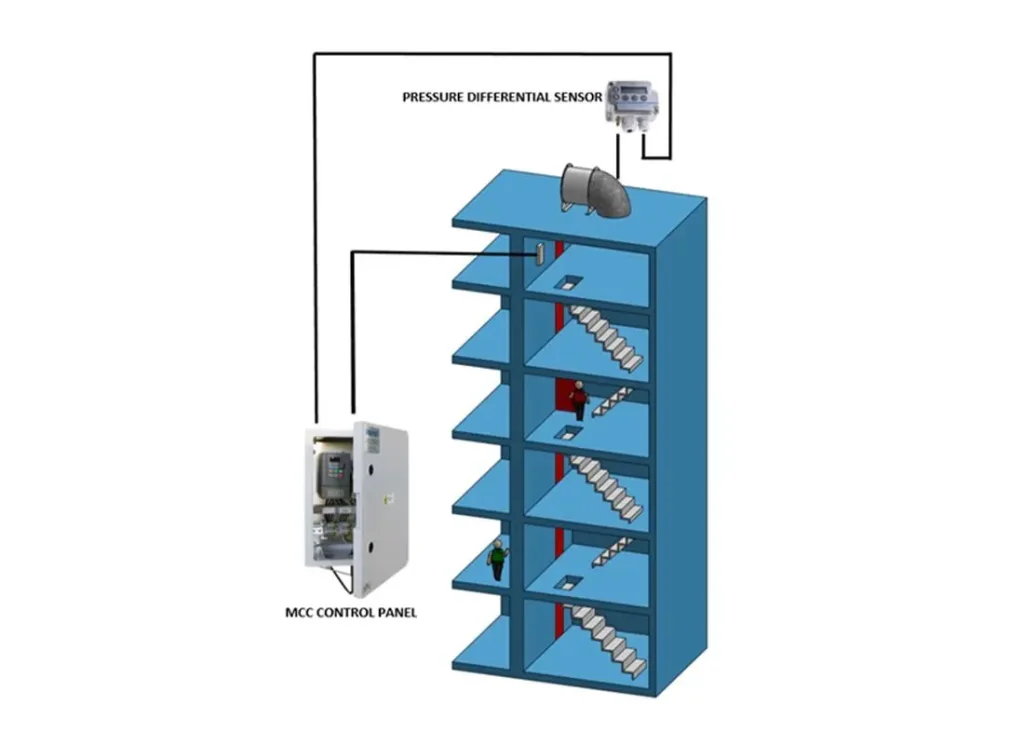
Ventilation systems for elevators: principle of operation
Elevators are an important element of many buildings, offering an efficient transportation solution for the occupants. However, elevators can also pose risks in the event of a fire, as smoke and toxic gases can accumulate quickly in the elevator space.
That is why ventilation systems for elevators are becoming more and more common in modern buildings. These systems are designed to quickly evacuate smoke and toxic gases from the elevator space, thus ensuring the safety of the occupants.
In this article, we will explore the principle of operation of ventilation systems for elevators, the various components of these systems, as well as the factors to be taken into account when selecting and maintaining these systems.

Principle of operation of ventilation systems for elevators
The principle of operation of ventilation systems for elevators is relatively simple. When a fire breaks out in a building, fumes and toxic gases can spread quickly in the elevator space. Ventilation for elevators are designed to quickly evacuate these gases, thus preventing their spread to other parts of the building.
These systems work thanks to the installation of high-power fans in the upper parts of the elevator space. These fans create a negative pressure, thus sucking smoke and toxic gases out of the elevator space and evacuating them to the outside of the building.
Components of ventilation systems for elevators
1. Fans: Fans are the key components of ventilation for elevators. They are responsible for creating the necessary pressure to suck smoke and toxic gases out of the elevator space.
2. Ducts: Ducts are used to transport smoke and toxic gases from the elevator space to the outside of the building. They must be heat-resistant and be able to withstand the high temperatures that can occur during a fire.
3. The intake and outlet grilles: The intake and outlet grilles are used to allow air to circulate in the elevator space and to evacuate smoke and toxic gases.
4. The control panels: The control panels are used to control the operation of the fans and to monitor the levels of smoke and toxic gases in the elevator space.
Factors to consider when selecting and maintaining ventilation systems for elevators
1. The size of the elevator: The size of the elevator must be taken into account when selecting ventilation systems. The ventilation systems must be dimensioned to the dimensions of the elevator space in order to guarantee an effective evacuation of smoke and toxic gases in the event of a fire.
2. The configuration of the elevator: The configuration of the elevator can also have an impact on the choice of systems. Elevators that open into an open space may require more robust ventilation systems than those that are located in a closed space.
3. Compliance with safety standards: For elevators must comply with local and national safety standards. It is important to work with qualified professionals to ensure that the systems comply with these standards.
4. Regular maintenance: Regular maintenance is essential to ensure the optimal functioning of ventilation systems for elevators. Regular maintenance tasks, such as cleaning filters, inspecting fans and ducts, and checking control panels, must be carried out in accordance with the manufacturer’s recommendations.
Maintenance of ventilation systems for elevators
Regular maintenance is essential to ensure the optimal functioning of elevator ventilation systems. Regular maintenance can help prevent breakdowns and costly repairs, and can also improve energy efficiency and system safety.
Here are some key maintenance tasks :
1. Cleaning the filters: The filters must be cleaned regularly to ensure optimal air circulation and prevent the filters from clogging.
2. Inspection of fans and Ducts: Fans and ducts should be inspected regularly to ensure that they are working properly and to detect any signs of damage or wear.
3. Checking the control panels: The control panels must be checked regularly to ensure that the ventilation systems for elevators are working properly and to detect any signs of malfunction.
Ventilation systems for elevators are essential to guarantee the safety of the occupants in the event of a fire. By understanding the principle of operation of systems for elevators, as well as the various components and factors to be taken into account when selecting and maintaining these systems, building owners can ensure the safety and comfort of their occupants.
